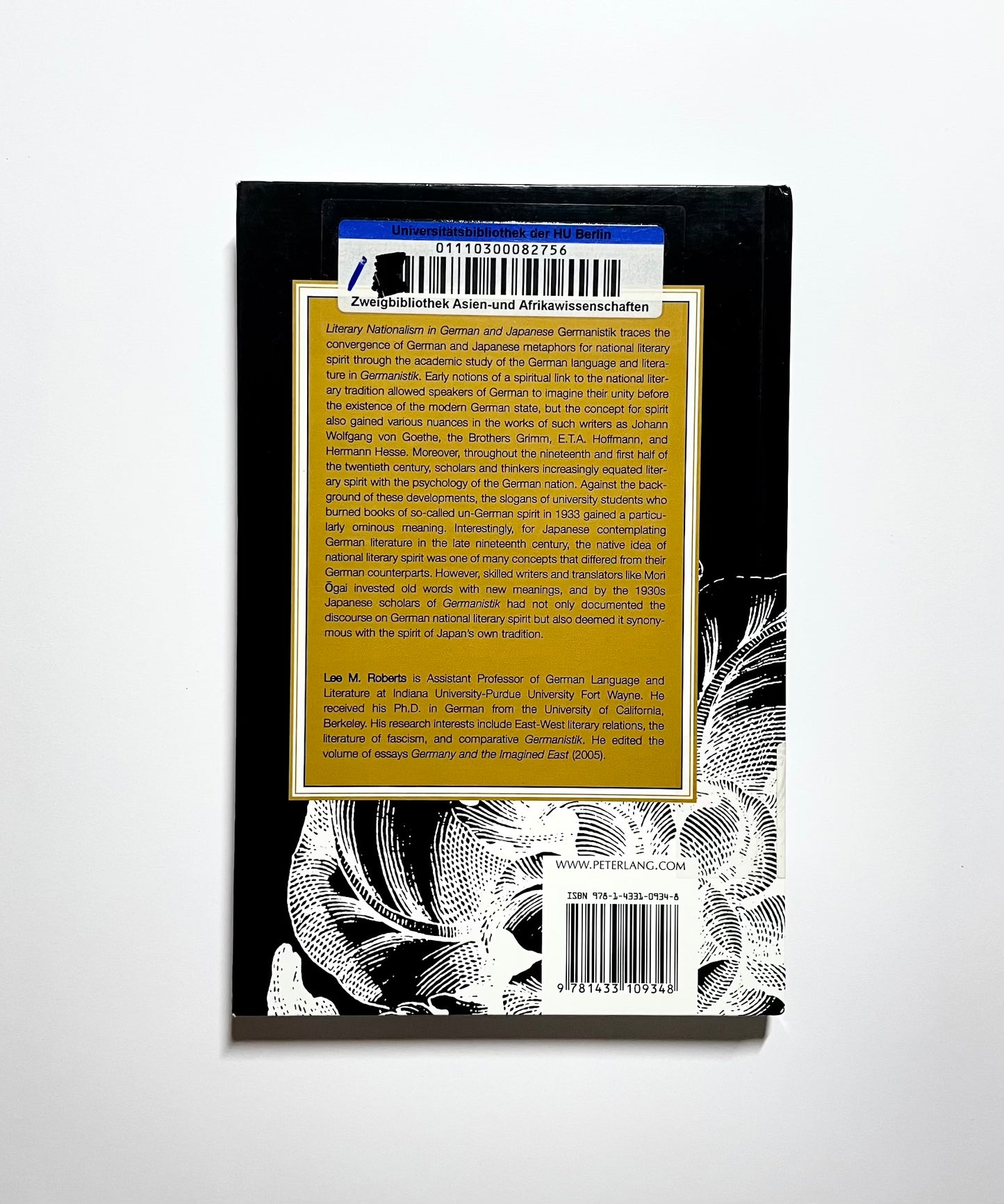Literary Nationalism in German and Japanese «Germanistik»
Literary Nationalism in German and Japanese «Germanistik»
Peter Lang Pub Inc
Couldn't load pickup availability
by Lee M. Roberts
Literary Nationalism in German and Japanese Germanistik traces the convergence of German and Japanese metaphors for national literary spirit through the academic study of the German language and literature in Germanistik. Early notions of a spiritual link to the national literary tradition allowed speakers of German to imagine their unity before the existence of the modern German state, but the concept for spirit also gained various nuances in the works of such writers as Johann Wolfgang von Goethe, the Brothers Grimm, E.T.A. Hoffmann, and Hermann Hesse. Moreover, throughout the nineteenth and first half of the twentieth century, scholars and thinkers increasingly equated literary spirit with the psychology of the German nation. Against the background of these developments, the slogans of university students who burned books of so-called un-German spirit in 1933 gained a particularly ominous meaning. Interestingly, for Japanese contemplating German literature in the late nineteenth century, the native idea of national literary spirit was one of many concepts that differed from their German counterparts. However, skilled writers and translators like Mori Ōgai invested old words with new meanings, and by the 1930s Japanese scholars of Germanistik had not only documented the discourse on German national literary spirit but also deemed it synonymous with the spirit of Japan’s own tradition.
Condition: Very good / Good, Ex-library book with usual library markings, stamps and stickers.
Format: Hardcover
Published: 2010
Pages / Size: 233 p, 23.2 x 15.5 x 2 cm
Language: English
ISBN: 978-1433109348










Shipping policy
Shipping cost
Free standard shipping to Germany on orders of €50,00 or more (after any coupon and sale discounts).
| Weight | Price |
| 0g - 999g | €3,50 |
| 1000g - 1999g | €6,50 |
| 2000g - 4999g | €7,50 |
Please contact us for orders from outside Germany.
Your order will be shipped after we receive your payment.
Unless otherwise specified in the respective offer, the goods are delivered domestically (Germany) within 3 - 7 days after the conclusion of the contract (if advance payment has been agreed after the time of your payment order)
Please note that there will be no deliveries on Sundays and public holidays.
If you have ordered items with different delivery times, we will send the goods in one shipment, unless we have made a different agreement with you. In this case, the delivery time is determined by the item with the longest delivery time that you have ordered.
If you have further questions you can contact us anytime using the contact details found in the legal notice.
Collapsible content
◎ Books Condition Guide
- New : This is a new book, unused, unread copy in perfect condition.
- Very good: A book that looks new but has been read. Cover has no visible wear. No missing or damaged pages, no creases or tears, and no underlining or highlighting of text, and no writing in the margins, possible very minimal creasing.
- Good : The book has been read but is in good condition. It has very minimal damage to the cover, including scuff marks. The binding has minimal wear. The majority of pages are undamaged with minimal creasing or tearing. There are no missing pages. A book in fair condition, the text pages and illustrations will be complete. It may also be worn or show some early signs of splitting internally at the spine. A fair dust jacket will likely have some creases or chips or small tears and may be dirty.
- Acceptable : A worn book that has complete text pages. Binding, jacket (if any) will be worn. Spine may be warped with cracking and scuffing.
This copy may be soiled, stained, spotted, discoloured and browned or creasing Pages. Markings and note taking do not interfere with reading. May be some water damage and cover slightly torn.










